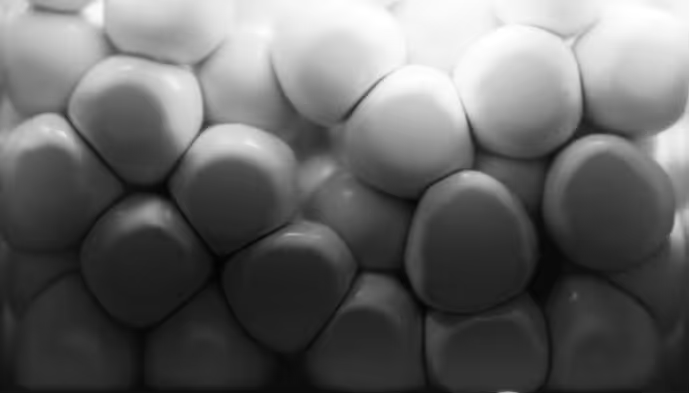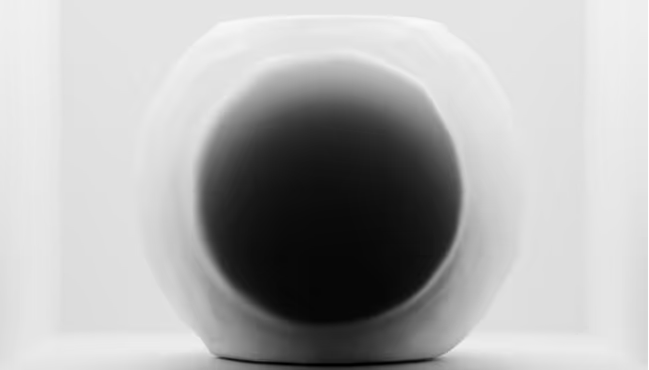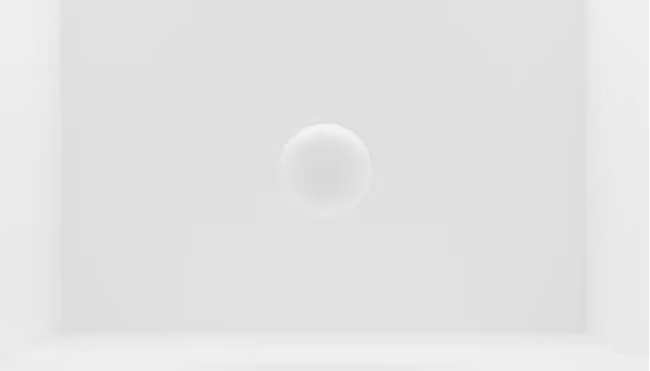
When Joon Sang Yoo, CEO of Reatic Industry, set out to create a media art project for subway billboards, his goal was to turn ordinary advertising spaces into artistic expressions. Motion graphics, a form of digital animation, became his vehicle for blending art and entertainment, turning everyday settings into immersive experiences. But like most ambitious projects in 3D, there were technical challenges along the way—many of which were overcome with the help of GarageFarm.NET.
Reatic Industry, Joon Sang’s brainchild, focuses on transforming abstract ideas into visual spectacles, a mission that started with a personal passion for motion graphics. Initially a hobbyist, Joon Sang’s professional journey was deeply influenced by his transition from software development to creative design.
“Motion graphics allow me to express the ideas in my head exactly as they are,” says Joon Sang. His goal with this particular project was to shift the perception of subway billboards from commercial ad space to a canvas for public art. The project featured a 3D motion graphic sequence in which balls appear to expand and fill the screen, creating an illusion of space and depth.

"We envisioned the billboard as a glass window. Balls would fill the space, defying the typical boundaries of the screen, and then disappear into nothingness, captivating passersby."
“In addition to the background creating a three-dimensional sense of space, a ball drops out of nothingness and quickly expands to fill the space, creating a sense of presence, while simultaneously blacking out the screen to create a twist that caught the viewer's attention.”



Joon Sang's creative direction emphasized this transformation of space, crafting an illusion that broke the confines of a flat, 2D screen. This project was not only visually engaging but also aimed to challenge the way people interact with typically mundane environments.
While the creative process was smooth, technical hurdles arose when it came to rendering the project. Motion graphics involve numerous frames—458 to be exact for this project. Each frame took around 30 minutes to render, and by Joon Sang's calculations, the entire process would take nearly 229 hours (more than 9 days) to complete on his personal machine.
That's when GarageFarm.NET became a key player.
“I hadn’t used render farms before, but the need became obvious when deadlines were tight and I had other projects to manage while rendering,” Joon Sang explains.
Render farms, like GarageFarm.NET, offload the time-intensive process of rendering complex animations by using cloud-based servers. These platforms provide much faster rendering speeds by distributing the task across multiple computers.
Joon Sang discovered GarageFarm.NET when they reached out to him for a collaboration. The service allowed him to render the entire project in just two days—a significant time savings that allowed Reatic Industry to deliver the project on time without sacrificing other ongoing work.
For Joon Sang, one of the key advantages of GarageFarm.NET was its user-friendly interface.
"The UI design is more intuitive than I expected, and it made my first render farm experience seamless," he notes.
Beyond the ease of use, the support team played an essential role, particularly when technical issues arose. One such problem occurred when Joon Sang's physics simulations weren't rendering properly despite using cached data. "Even though I had pre-cached the simulation, it didn’t output as expected during the rendering process, and it consumed more credits than anticipated."
GarageFarm.NET’s Korean support team quickly identified the issue, adjusting simulation settings and providing recommendations to optimize the process.
For this project, Joon Sang utilized Cinema 4D and its Redshift render engine to create the dynamic visual effects of the balls inflating and interacting with the 3D space. While 3D modeling was not the primary focus—Joon Sang specializes more in motion graphics and environmental creation—the simulation effects, such as the Inflate modifier, posed unique challenges.
"The ball had to maintain its shape while expanding, which required complex simulations. The small gaps and polygonal errors often caused the ball to tear or disappear, which was the most difficult aspect to control."
This is where Redshift’s capabilities shone. Known for its speed and ability to handle complex simulations, Redshift allowed Joon Sang to execute the project within a manageable timeframe, despite the technical difficulties.
In addition to speed and ease of use, GarageFarm.NET offered cost-efficiency—a crucial factor for small studios like Reatic Industry. While Joon Sang acknowledges that the price could be steep for individual users or students, he believes it is affordable for professional studios.
“When you consider the cost of an entire project, using a render farm service becomes more of an investment rather than an expense,” Joon Sang explains.
Another standout feature for Joon Sang was the support for priority nodes when handling physics-heavy projects. “When there are a lot of calculations involved, it helps to use higher-priority nodes to avoid errors.”
Looking ahead, Joon Sang is fascinated by the integration of AI tools into the 3D design industry. In his view, AI will continue to disrupt the field by speeding up workflows, improving quality, and reducing the need for human intervention in tasks like lighting and texturing.
"AI is already revolutionizing rendering by speeding up calculations for things like materials and lighting. In the future, designers will need to evolve and learn how to collaborate with AI to stay competitive.”
Joon Sang is already experimenting with Adobe Firefly, an AI-powered tool for generating design elements, which he uses primarily for assets that would otherwise be time-consuming to create.
However, despite his excitement about AI, Joon Sang stresses that human creativity remains indispensable, especially for high-quality work. “While AI can save time, human skill still makes the difference when it comes to detail and emotional depth in the final product.”
In the end, Joon Sang highly recommends GarageFarm.NET to other designers. "I’ve already recommended it to several people I know, especially because it offers time-saving benefits without sacrificing quality."
Looking to the future, Joon Sang’s goal is to democratize motion graphics by making the tools and techniques more accessible to a broader audience. He envisions moving the industry from a primarily B2B market to one that caters directly to consumers, allowing more people to create and enjoy 3D art.
For now, you can explore the fascinating world of Reatic Industry on YouTube, where Joon Sang continues to blur the lines between art and entertainment with his innovative motion graphics projects.
If you’re looking to streamline your 3D projects or explore the world of motion graphics, take a page from Reatic Industry’s book and consider how GarageFarm.NET can support your next big creative endeavor.
Check out Reatic Industry's channel: YouTube or visit reaticindustry.com for more.